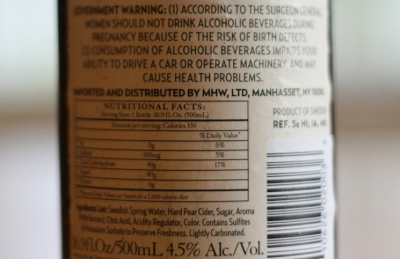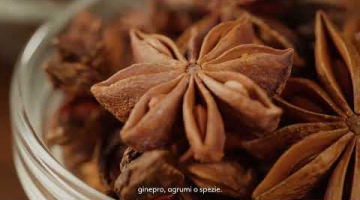This week the state run liquor stores in Finland pulled Fireball Cinnamon Whisky because it contains levels of propylene glycol that are “out of compliance with European regulations”. Both Sweden and Norway followed suit asking for the batches of of Fireball with propylene glycol to be recalled.
Since Fireball is such a hot product, there was an immediate firestorm on the Internet, enough to cause Sazerac president Mark Brown to issue a statement about the recall. Truth be told, the EU has much stricter regulations on food and beverage than the US (which is why tonic in the EU has sugar and not high fructose corn syrup, and is consequently so much better). The US Food and Drug Administration considers propylene glycol safe “up to 50 grams per KG” (Fireball has less than 1/8th of that) and it’s a common additive that’s found in thousands of products in the US.
It’s not uncommon for alcohol companies to make different versions of their products for different regions because of varying food laws and requirements. Martini makes a special version of their vermouth in the United States that doesn’t contain any calamus, a botanical that’s banned by the FDA but considered safe in the EU. (Calamus is also the reason you can’t get Amer Picone in the US, as it’s one of the ingredients).
The big issue that this Scandinavian recall raises is that, whether or not it’s considered safe, consumers should have the information on what they’re consuming so they can make their own decisions. Go to any grocery store and almost every packaged product lists its ingredients as well as calories, sugar, and a host of other important details. Why is hard alcohol exempt from this?
Most spirit companies will state (as Sazerac did when asked) that “the exact recipe is proprietary”. It’s a thin argument, as some of the most iconic beverages in the world, like Coca Cola, list most of their major ingredients on the package. Of course they sum up their flavorings under the term “natural flavorings”, but the list of what’s inside the bottle, for the most part, is on the bottle.
Fireball Cinnamon Whisky
To their credit, Sazerac is one of the few spirit companies to list the nutritional information for their products, but most other spirit companies don’t disclose even the most basic information on their spirits. We did a search to try to find the nutritional information on the corporate sites for many of the major consumed liquors, including Jack Daniels Tennessee Honey, Jim Beam Kentucky Fire, andJägermeister, and came up empty. They don’t even disclose calories and sugar!
It’s understandable why these companies don’t want to have to disclose what they put in the bottle. Would you buy a honey liqueur if you saw that it had more high fructose corn syrup than honey? Would you buy a bottle of vodka if you found out it had glycerine, sugar, or other additives? Having the basic information on the label would also mean that some brands would have to change their stories. There are a number of rums that claim that they “don’t add any sugar” and yet, they do:
Source: Alko Finland / Refined Vices
The issue of sugar in spirits isn’t trivial. Sugar is an accepted additive for several spirits that are tightly controlled by an AOC (Appellation d’origine contrôlée) including Cognac and Tequila. Wouldn’t it be important to know if the bottle of tequila you bought has added sugar? Beyond “hidden sugar”, the amount of sugar in many liqueurs is staggering. By definition, a liqueur is defined by the TTB (Alcohol and Tobacco Tax and Trade Bureau) as having “not less than 2.5% by weight sugar, dextrose, levulose or a combination”. That’s the minimum. We did some research (including the information from Sazerac’s nutritional information site) and the level of sugar in some popular liqueurs is pretty mind blowing.
Fireball Cinnamon Whisky (66 proof, 33% ABV, 1.5 oz serving 108 calories and 11 grams of sugar per serving) – Doesn’t sound horrid until you start doing the math: at 1.5 oz, 11 grams of sugar (which is 2.2 teaspoons or .73 Tablespoons), this converts to 0.38 oz. which is a full 25.33% of the shot. That’s right – 1/4 of that shot of Fireball is sugar! At 33% ABV there’s almost as much sugar in each shot of Fireball Cinnamon Whisky as there is alcohol.
Jack Daniels Tennessee Honey (70 proof, 35% AVB, 1.5 oz serving) – Since Brown Forman/Jack Daniels doesn’t disclose the nutritional information, we can only go with what’s been reported online: 108 calories, 6 grams of sugar. For 1.5 oz, 6 grams of sugar is 1.2 teaspoons or .4 Tablespoons, which converts to .21 oz which is 14% of the shot. Not as bad as Fireball, but still a healthy percentage.
Jägermeister (70 proof, 35% AVB, 1.5 oz serving) – Neither Jägermeister nor Sidney Frank (the distributor) officially discloses the nutritional information for Jägermeister, but given what we’ve been able to find online (and it must be considered a best guess), Jägermeister has 150 calories and 16.4 grams of sugar. For 1.5 oz, 16.4 grams of sugar is a shocking 1 full Tablespoon of sugar! That is .58 oz, a shocking 38.5% of the shot. That’s right, there’s apparently more sugar in a shot of Jägermeister than alcohol!
1 Tablespoon Per Sugar Per Shot
Would you buy a bottle of alcohol if you knew that it had more sugar than alcohol in it? This is information that consumers deserve to have and there’s no excuse why the TTB doesn’t require it. There’s an obesity epidemic in the US and it’s irresponsible for liquor companies not to let their customers know that they may be consuming as much as 1 Tablespoon of sugar per shot!
It’s time for the TTB to stop letting liquor companies hide what they’re putting in their bottles and give customers the information they need to make educated decisions about what they buy. There’s simply no excuse.
The upside of nutritional information on spirit bottles is that quality spirits that don’t actually add anything extra to their spirits will be rewarded by consumers. Shouldn’t the companies who do what they do without relying on sugar, flavorings, emulsifiers, and anti-freezing agents have the benefit of their customers knowing it?
thanks to original post:http://www.drinkspirits.com/other/nutritional-information-liquor-labels/
















